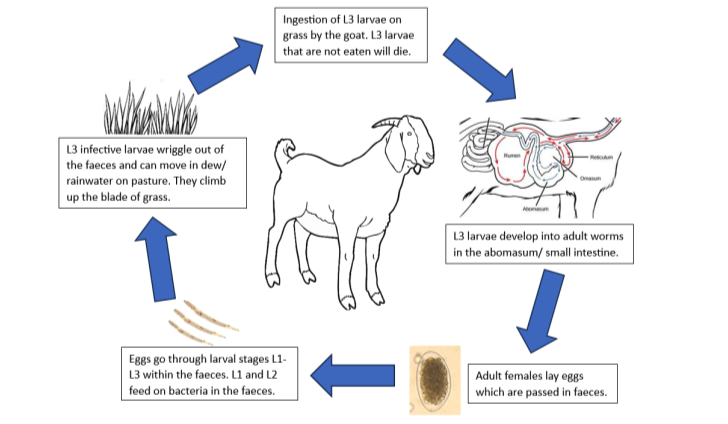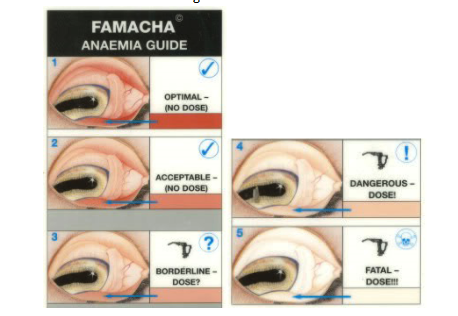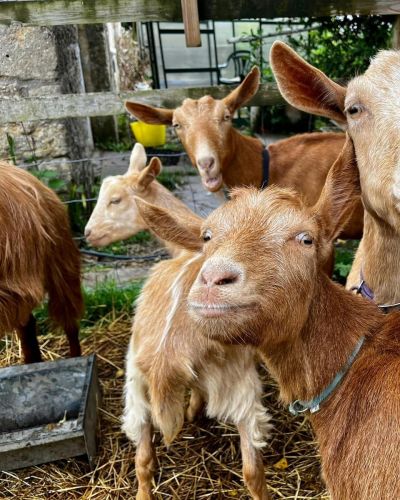Navigating the Worm Maze: A Comprehensive Guide to Sheep and Goat Roundworms
Which worms affect goats and sheep?
Trichostrongylus axei
- These worms are small and hair-like, tapered at one end. Males are 4–6mm long and the females are 5–7mm long.
- Live in the abomasum.
Other Trichostrongylus species (T. colubriformis, T. vitrinus)
- Live in the small intestine.
Teladorsagia circumcincta
- Adult males are 7-8mm long and adult females are 10-12mm long.
- Live in the abomasum.
· Haemonchus contortus
- Adult female worms are quite long (20 to 30mm) and look like a ‘barber’s pole’ due to the pink, blood-filled, intestinal tract of the worm twisted around the paler reproductive tract. They are prolific egg layers, laying up to 10,000 eggs per day.
- Adult males are smaller (around 15mm) and pale pink.
Nematodirus battus
- Very seasonal – eggs hatch between April and June when environmental temperature is consistently above 10°C. A cold winter primes the eggs.
- Transmitted from previous years lambs/ kids to this year’s lambs/ kids when the same pasture is grazed.
How are animals infected with worms?

- Development from an egg to L3 within faeces takes between 4 and 10 days depending on temperature – slower in colder temperatures and faster in warmer weather.
- Below 10 degrees Celsius and above 35 degrees Celsius larval development is markedly reduced. Excessively dry conditions also reduce development.
- L3 larvae cannot feed on bacteria and will die when their energy reserves are used up. This occurs faster at higher temperature and humidity.
- Adult worms can survive and reproduce for several months within the abomasum/ small intestine.
What environmental conditions will affect worm survival?
- Haemonchus contortus eggs can survive very hot and dry conditions e.g. summer 2022, however most Trichostrongyle eggs will not survive for long in this environment.
- Below 10 degrees Celsius the hatching of worm eggs and development into L3 larvae is slowed down.
What affect do worms have on goats and sheep?
- Trichostrongylus damages the abomasum leading to malabsorption of essential nutrients and protein loss. This causes scour, inappetence, weight loss and poor growth rates.
- Haemonchus contortus lives in the abomasum (4th stomach) where it sucks blood causing anaemia. This causes weakness, bottle jaw (swelling under the jaw) and weight loss.
- Nematodirus larvae attack the gut wall and cause dehydration and rapid death.
- This is a pre-patent disease which means that disease occurs before the worms produce eggs (therefore cannot be diagnosed with a WEC).
Do sheep and goats get immunity to worms?
- Unlike adult sheep, goats do not develop immunity to roundworms, which means that they are susceptible to infection throughout their life.
- No animals develop immunity to Haemonchus, including adult sheep, therefore we must remember this during late summer when Haemonchus worm burdens can increase.
Resistance
- A 2016 study of sheep farms in the Southwest of England found 100% resistance to Benzimidazole, 77% resistance to Levamisole and 100% resistance to Ivermectin [Bull and others (2022)]. This study was only conducted on a small number of farms however it is an important reminder that we need to be very aware of anthelmintic resistance.
- Monepantel (Zolvix) resistance was first detected in 2017 (Hamer and others 2018).
- We should be performing faecal egg count reduction tests to determine whether resistance is present on our farms. This is available through the animal health and welfare pathway for sheep farmers.
How can we control gastrointestinal roundworms in sheep and goats?
Avoid underdosing:
- Use well maintained dosing guns.
- Use in-date and correctly stored wormer.
- Use individual weights or weigh to the heaviest animal in the group.
- Yard the sheep/ goats without feed for a period of time before giving a benzimidazole or macrocyclic lactone.
Quarantine bought in animals:
- Zolvix + yard for 48hrs
- Turn out onto dirty pasture that has previously been grazed by the home flock/ herd.
Targeted selective treatment:
- If lambs/ kids are not growing at the expected growth rate despite adequate nutrition, then they might benefit from worming.
- FAMACHA scoring for Haemonchus control.

Other methods of controlling roundworms
Breeding RESISTANT sheep/ goats:
- Resistant animals are those that mount a strong immune response to roundworms.
- Worm egg counting ewe lambs at 21 weeks old is an accurate predictor of the total egg output of the ewes in their first lambing and lactation. This is useful for EBVs as it is heritable (applicable with goats too).
- We can also measure antibodies to CarLA (carbohydrate laval antigen) by blood sampling or saliva testing. There is a strong correlation between a high level of antibodies and a low WEC.
Breeding RESILIENT sheep/ goats:
- Keeping lambs/ kids that have good growth rates and do not require worming as replacements.
Trace elements:
- Cobalt deficiency can predispose animals to worms.
- A high worm burden increases the risk of cobalt deficiency.
Bioactive forages e.g. chicory, sulla, sainfoin and birdsfoot trefoil:
- Condensed tannins within these plants may either reduce egg hatching or act secondarily to improve immune response in the sheep/ goat.
- The structure of these plants may also reduce migration of the larvae up the plant and consequently reduce ingestion of the larvae.
Reducing pasture level contamination:
- Taking a crop of hay or silage off the field.
- Avoid overgrazing and overstocking.
- Grazing pasture with cattle or horses will reduce contamination.
- Rotational grazing i.e. moving paddock weekly.
Copper oxide wire bolus:
- Shown to be effective at reducing Haemonchus worm burdens in goats.
- Have to be very careful with copper toxicity in sheep!
Nematophagous fungi:
- Duddingtonia flagrans has been found to be effective at reducing larvae numbers in ruminants and on pasture when fed as a daily supplement.
- This fungus can survive in the ruminant GIT and germinate in faeces to trap the infective larval stage within faeces.
- This is not currently available in the UK and more research needs to be done on farm to determine efficacy, however it is something promising for the future.
Vaccines:
- A new vaccine called Barbervax has been produced for Haemonchus control however it requires a booster every 6 weeks. This is not currently available in the UK but something promising for the future.
- Research is ongoing into making a Teladorsagia circumcinta vaccine.
In conclusion, managing roundworms in sheep, and particularly goats, is tricky and multi-factorial. It is especially important to be aware of increasing anthelmintic resistance and we need to be able to control roundworms with management rather than relying on anthelmintic treatments.


